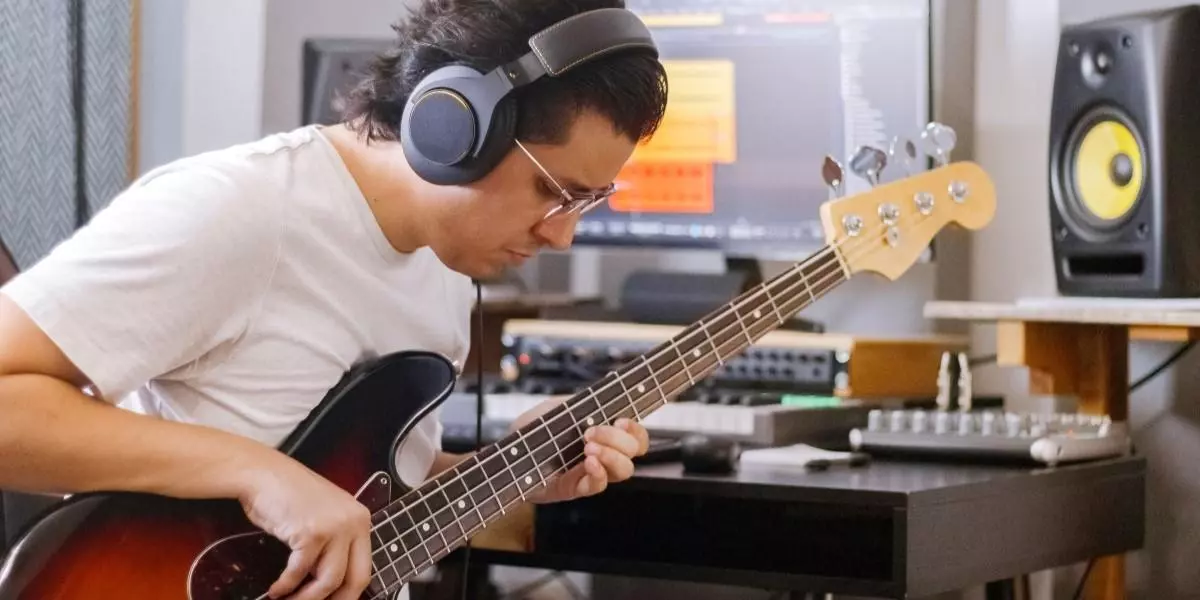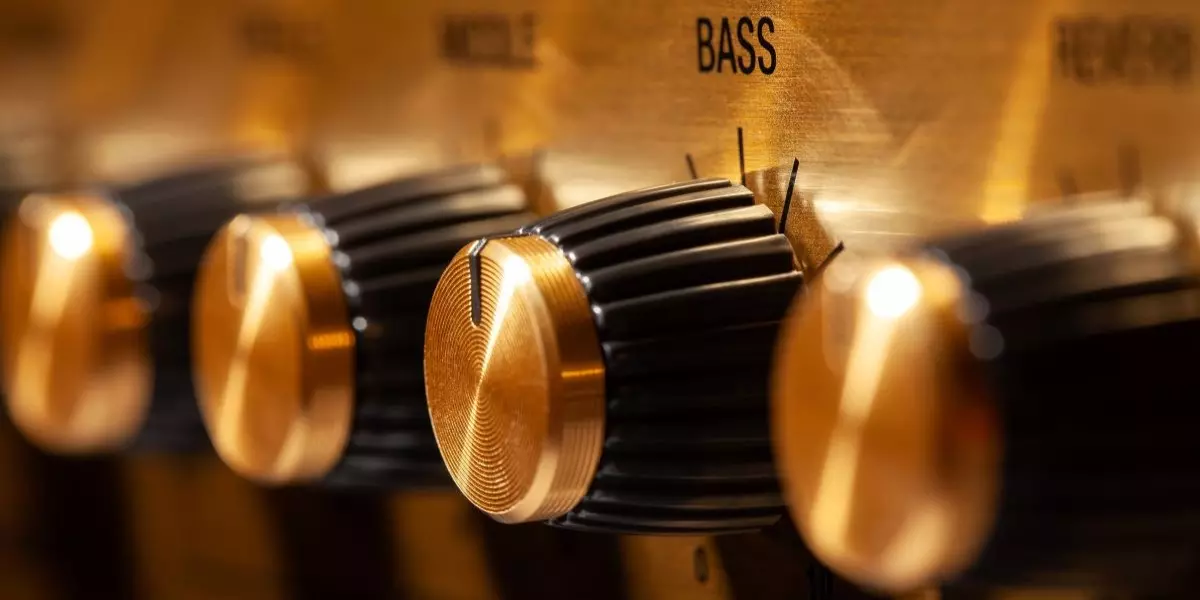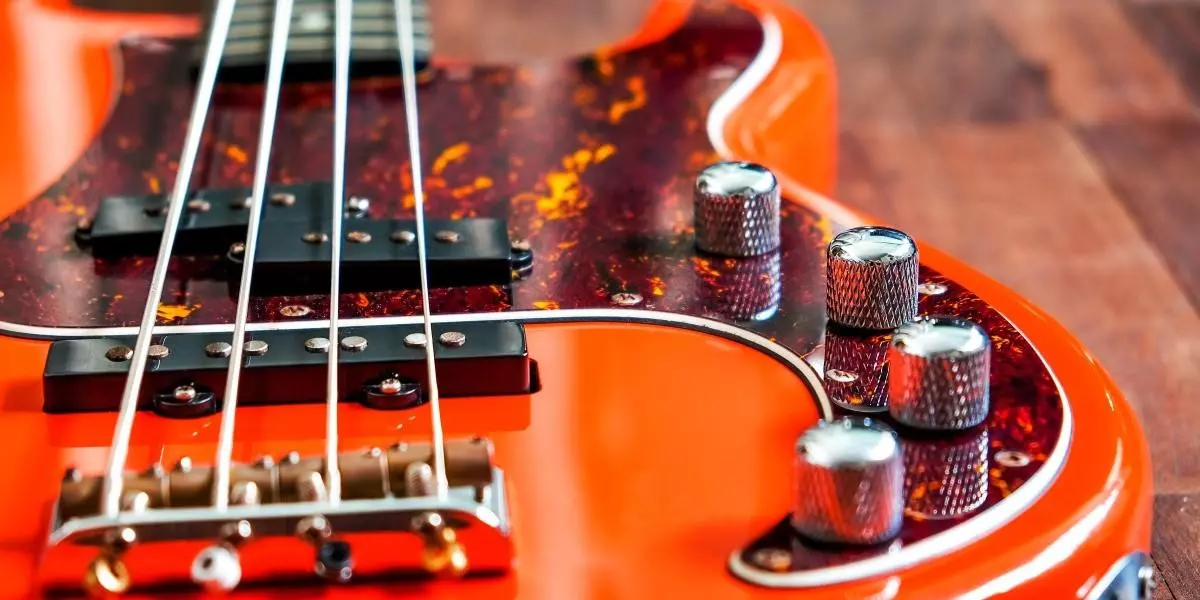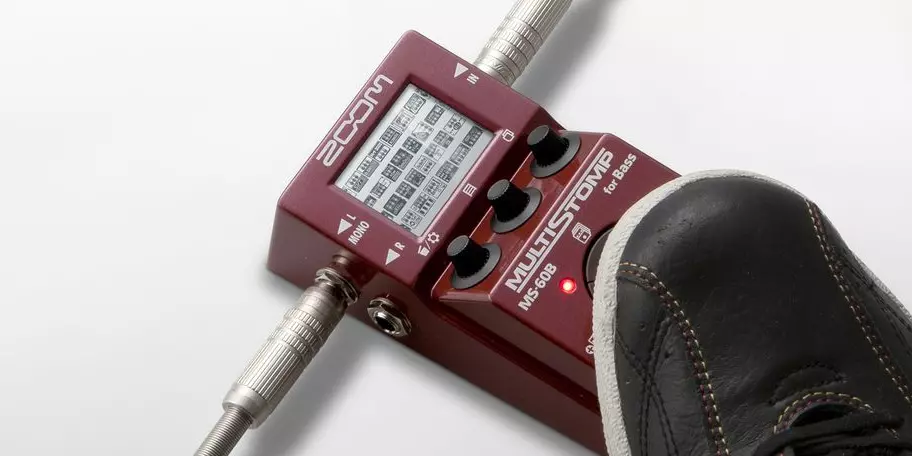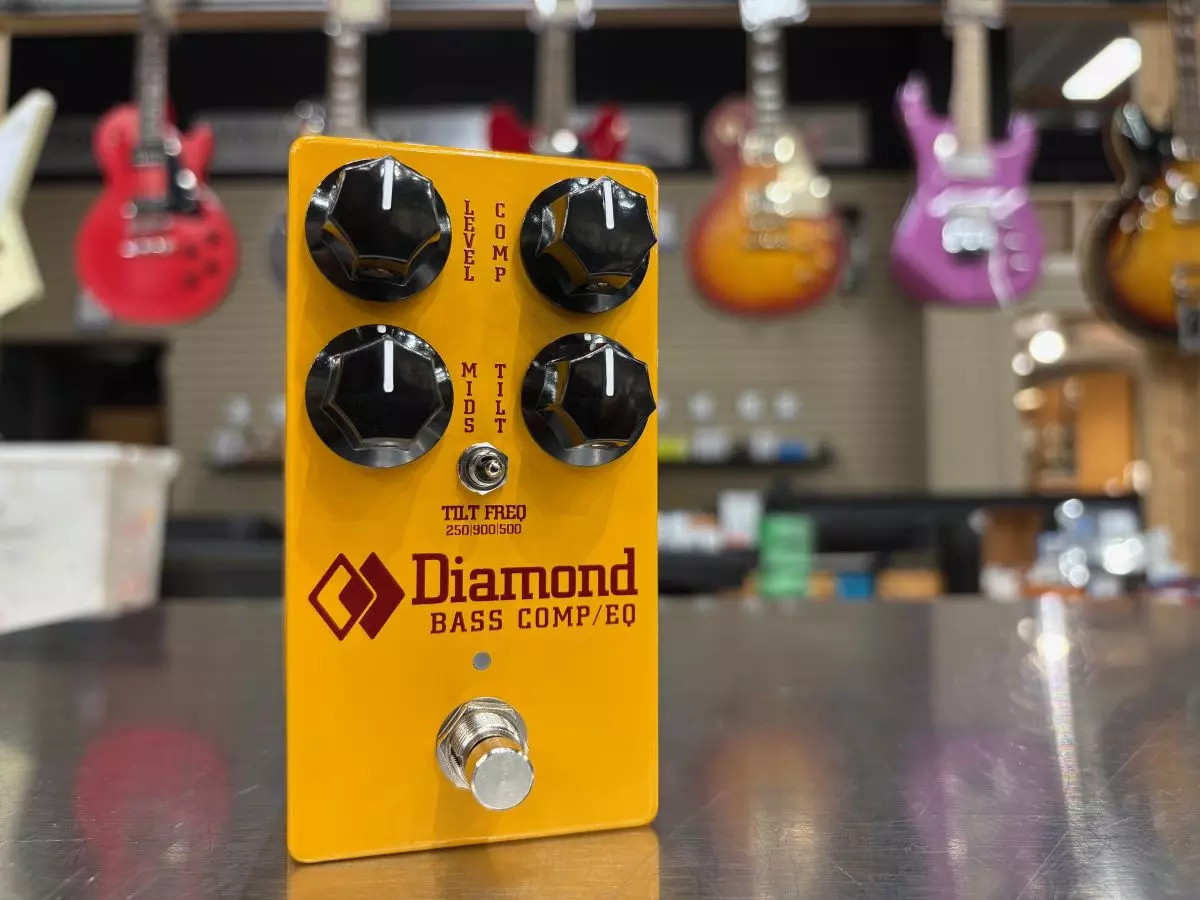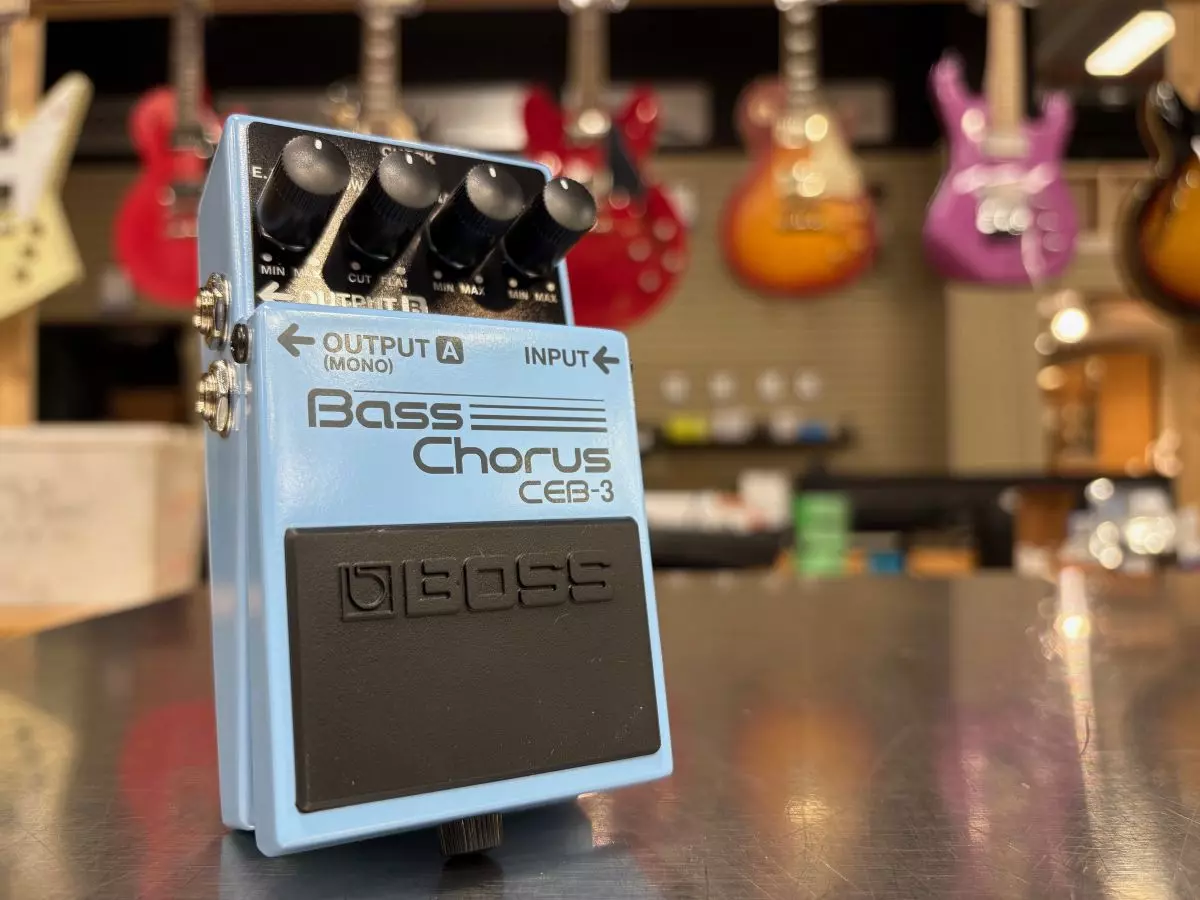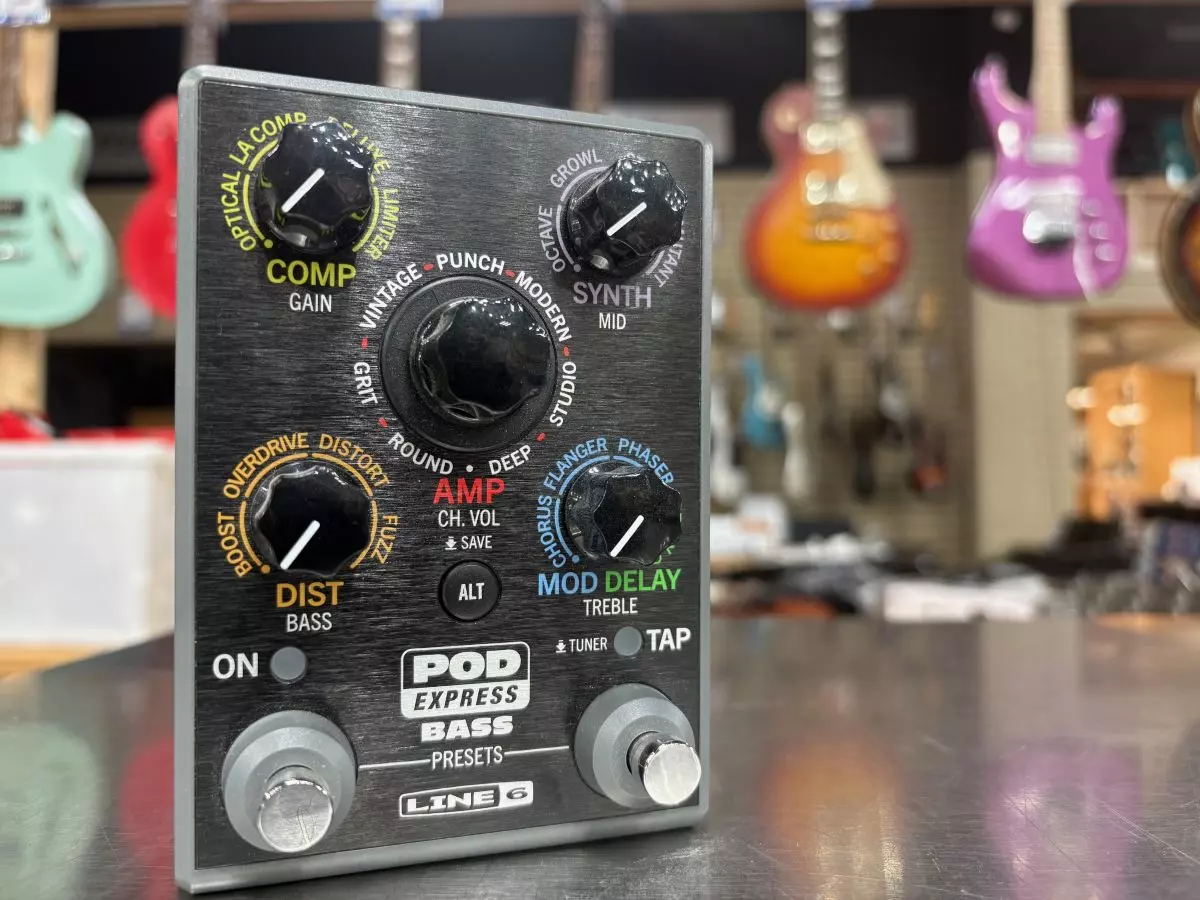Explaining The Different Types of Bass Effects
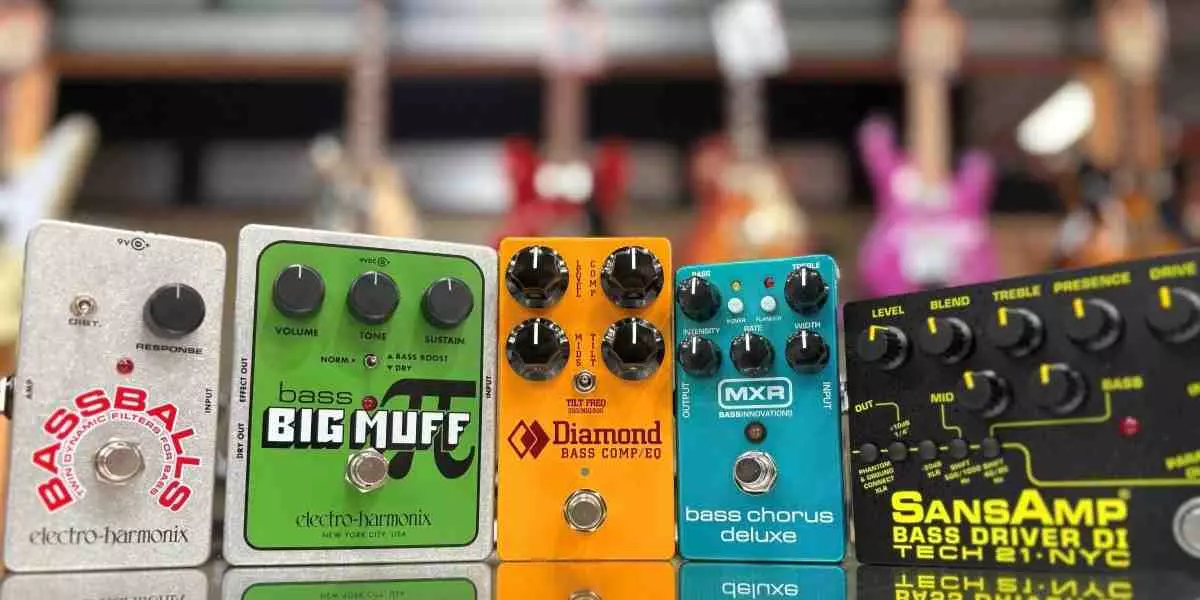
You have your bass and your amplifier. What is the next step? In many cases, nothing – bass players use a clean sound most of the time. However, there are many ‘clean’ bass sounds we hear that are processed using equalization (EQ) and compression.
With subtle changes like these, you may not even notice them, though they are playing a significant part in the sound that you hear. Sometimes, the effect is prominent and noticeable, like overdrive or chorus.
When we say ‘effect’, we usually mean sounds that change your signal. This is true for distortion or modulation. However, devices that utilize processing dynamics are also signal processors, and we’ll group them with other pedal effects.
Why Use Effects?
If you’re walking into a rehearsal or recording session, having a few bass effect pedals to choose from in your gig bag can be beneficial.
The bass can take advantage of plenty of functional and creative uses of effects, whether it be on stage or in the studio. For example, a specific song requiring a sound effect (for instance, a Synth bass effect to dial in the right sound for a Bootsy Collins bassline) or a creative choice by the player based on what they think will sound best in context.
Which Bass Effect is Right For Me?
Considering the numerous options of effect pedals for bass guitar players available on the market today, it can be overwhelming to narrow down which specific product is right for you.
First, you need to decide what effect type(s) you want. If you have specific sounds in mind, you may be looking for a product that closely matches your needs. To help you find the right option, consider watching demo videos online, reading customer reviews, and visiting your local Long & McQuade music store to test out the products in person.
All the effects discussed in this blog are available as pedals from various companies and can be easily obtained live without a computer or mobile device. A plethora of free and paid plug-in effects is also available for bass.
Bass Effect Pro Tips
Let's get started with a few pro tips you should know about pedals and effects:
1) Any pedal that a guitar can use, a bass can also use
The results are usually similar to what a guitar would produce. Most early adopters of bass effects would have gotten by, as there were few to no available bass pedals on the market until the late '70s – early '80s.
While you can use a guitar pedal as a bass pedal, sometimes it is not recommended because guitar pedals and bass pedals require different engineering to work with the appropriate instrument. A common ‘side effect’ of running your bass into a guitar pedal is losing low-frequency clarity and presence, a potentially troublesome result. Some companies create guitar and bass versions of the same pedal.
2) Effects are both professional and creative tools
Whether it’s a DI box/preamp that gets you a balanced output with a pre-mixer EQ or a synth-bass pedal that lets you nail the tone, pedals can dial in particular sounds that would not otherwise be possible.
3) Pedals will respond differently based on how strong your signal is
To ensure your pedal works correctly, you must provide it with the correct amount of signal.
If you are running multiple pedals together in a chain, ensure each pedal has its input and output levels set correctly. This is especially important for compressors and octave pedals.
If you’re not sure how strong the output of your bass is, try plugging it into a device that has a decibel or VU meter to get an accurate answer. If you’re using a preamp or a digital compressor such as the ART Pro Tube Mic Preamp, it will likely have a meter or visual representation of signal strength.
Type 1 – Dynamics/EQ Effects
These are the tools that bass players are using in every recording studio around the globe, particularly Compression and EQ. These two tools are responsible for:
- Reducing harsh signal peaks
- Smoothing volume differences
- Cleaning up low-frequency rumble
- Carving sonic space in a mix
- Taming or boosting output
Compressors
Compressor pedals help smooth out your sound or create a more compressed attack for styles like slapping. They have been standard tools for decades.
Popular examples include:
- Diamond Bass Comp/EQ
- Empress Bass Compressor
- BOSS LMB-3 Bass Limiter/Enhancer
- MXR M87 Bass Compressor
Using bass-specific compressors is recommended because they preserve low-end clarity. A standard guitar compressor like the MXR Dyna Comp can overly squash low frequencies, while the MXR Bass Dyna Comp provides features designed for bass.
Which Bass Compressor Should You Get?
Compressors generally fall into two categories: Function-based and Flavour-based.
Function-based compressors (e.g., MXR M87) offer attack, release, ratio, threshold and are transparent, precise, and similar to studio tools.
Flavour-based compressors use fewer controls and add coloration, such as tilt-EQ or tube warmth, encouraging adjustment by ear rather than parameter targeting.
Types of Equalizers
Two common EQ types: Graphic and Parametric.
Graphic Equalizers
Graphic EQs use fixed frequency sliders and are common on pedalboards.
Parametric Equalizers
Parametric EQs let you choose your target frequency and boost or cut with more precision.
EQ pedals can shape tone, remove problem frequencies, and emulate amps or speakers. Bass-specific EQs are optional since EQ affects frequencies regardless of instrument.
Equalizer Pedals
Start with subtle changes rather than drastic boosts. Cutting frequencies can often yield a more mix-ready tone.
Type 3 - Modulation
If Distortion effects are ones that distort your signal, Modulation effects are ones that affect the timing or frequencies of your signal. Rather than completely altering your signal and adding new harmonic content, Modulation takes what you give it and rearranges it in some way. As with the guitar, the most common modulation effects include Octaver, Chorus, Flanger, Tremolo, Phaser and Delay pedals.
For this blog, we'll stick to the effects that pertain primarily to bass players - Octaver and Chorus (though you can use any of these types of effects on your bass!).
Octave Pedals
Despite already being an octave lower than the guitar player in your band, now you can drop even lower - or raise higher! Bass players have used octave pedals for two main reasons. Achieving lower or higher pitches than your bass allows, and creating a synth-like tone for bass lines and solos.
If you use an octave pedal to play low notes, there is a significant factor you have to consider for the effect to function properly: tracking. Tracking refers to how well the pedal picks up what you play, determining its ability to capture and process that information.
If the note or notes you play are not delivered with clarity to the pedal, it may not produce the result you want. This is especially true with the lowest 4-5 notes on your 4-string bass (and anything below that on a 5-string bass), as these pitches are the hardest for octave pedals to process.
To achieve the best results, ensure that your Octave pedal is positioned early (or first) in your signal chain, only coming after a tuner, compressor, and wah pedal if you are using those. If you use distortion or modulation before an octaver, you may find the pedal can't do its job efficiently.
Some examples of Octave pedals include:
- MXR M288 Bass Octave Deluxe
- MXR M280 Vintage Bass Octave
- Boss Octave OC-5
- Electro-Harmonix POG
- Digitech Bass Whammy
Chorus Pedals
A 'Chorusing' effect is achieved by taking a signal, duplicating it slightly out of tune and blending the two, creating a 'wavy, shimmery' type of effect. Bass Chorus is an appealing sound that can be used in many creative contexts. Since your signal is having its tuning warped to create the effect, this can cause your root bass notes to become problematic if playing with a band of other pitched instruments, as they won't sound completely in tune and won't function in a band as a solid foundation.
As a result, companies have designed bass chorus pedals with low-frequency capabilities in mind. Many options offer a low filter that only applies the chorusing effect to the higher frequency range of the instrument, leaving your lower-pitched roots untouched. Your higher-pitched bass fills and solo parts are nice and chorus-rich.
Some examples of Bass Chorus pedals include:
- Boss Bass Chorus CEB-3
- MXR M83 Bass Chorus Deluxe
- Electro-Harmonix Bass Clone
- Ampeg Liquifier Analog Chorus
Multi Effects
Multi-Effect pedals offer a variety of different effects in one device. Multi-effect pedals are available in both beginner and professional models.
Beginner multi-effect pedals are marketed at more economical price points and offer players a wide range of new sounds and distinct effect types in one device, saving the hassle of renting or buying multiple different pedals. Some examples include: BOSS GT-1B, Zoom B1 Four, and the Line6 POD Express Bass.
Professional, all-in-one portable rig made of high-quality components designed to hold up in recording studios and on stage. Some examples include: BOSS ME-90B, Zoom B6, and the Darkglass Anagram.
Multi-effect pedals allow having virtually every effect type on the market at your disposal while also removing the need for multiple patch cables, power supplies, batteries, pedalboards, etc.
Some of them will also offer amp/cab sims, which are designed to take your direct bass signal and simulate the sound of being amplified and then mic'd up.
This is a great feature to have for recording your bass directly into an audio interface or recording desk, and you want to avoid it sounding too dry. This is also handy if you plan on playing live without an amp and know that the venue will have a PA system that you can feed into. This technology is similar in concept to the Tech21 SansAmp Bass Driver DI.
Experiment with Bass Effects
Whether you're just starting your pedal journey or fine-tuning a pro-level board, bass effects offer endless ways to shape your tone, spark creativity, and adapt to any musical context. The best way to discover what works for you is by plugging in and trying things out for yourself. Head to your local Long & McQuade to demo pedals in person, ask questions, and get hands-on with the sounds you've been imagining. That covers all the key points on the world of bass effects!

